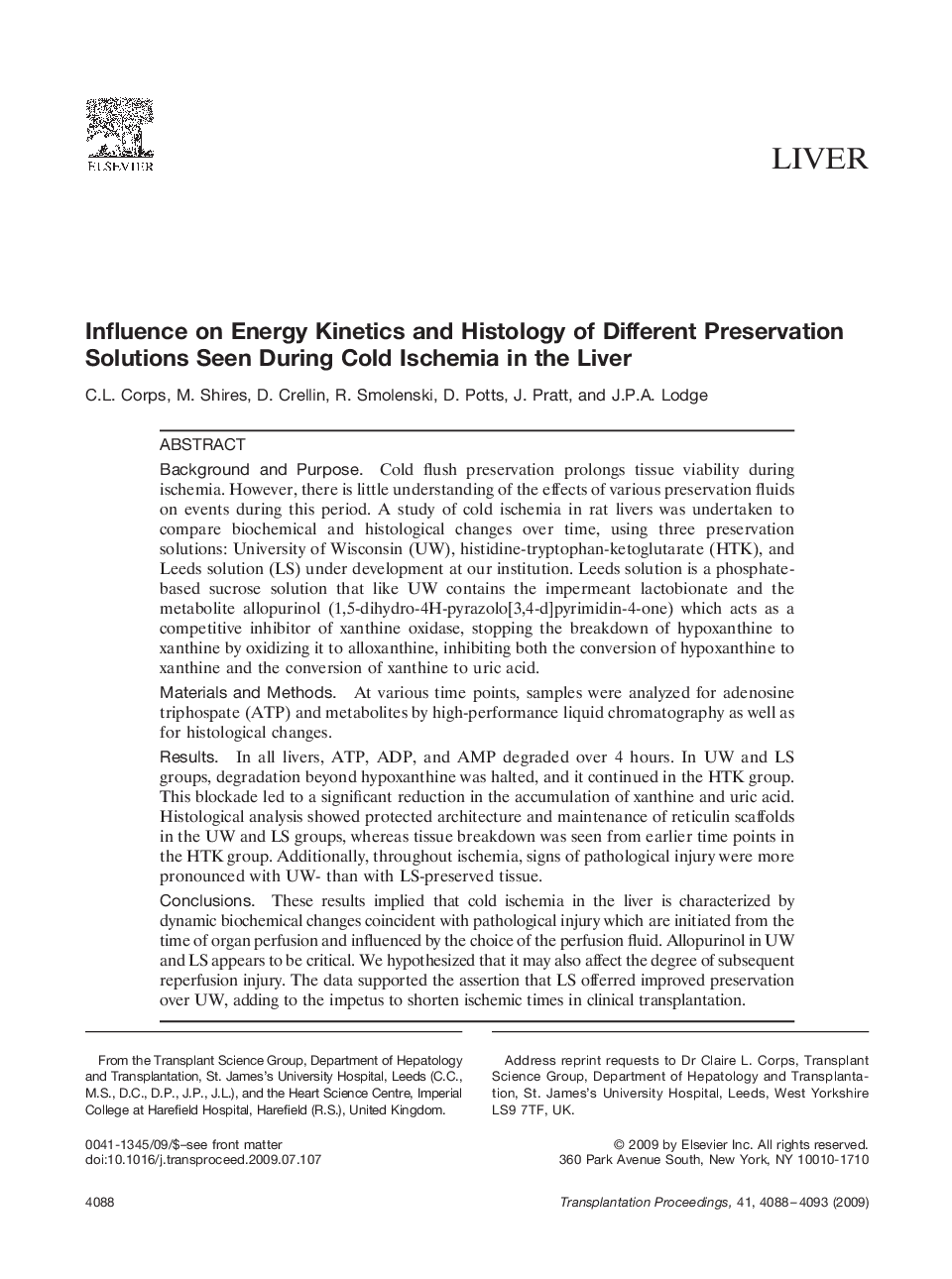| Article ID | Journal | Published Year | Pages | File Type |
|---|---|---|---|---|
| 4258466 | Transplantation Proceedings | 2009 | 6 Pages |
Background and PurposeCold flush preservation prolongs tissue viability during ischemia. However, there is little understanding of the effects of various preservation fluids on events during this period. A study of cold ischemia in rat livers was undertaken to compare biochemical and histological changes over time, using three preservation solutions: University of Wisconsin (UW), histidine-tryptophan-ketoglutarate (HTK), and Leeds solution (LS) under development at our institution. Leeds solution is a phosphate-based sucrose solution that like UW contains the impermeant lactobionate and the metabolite allopurinol (1,5-dihydro-4H-pyrazolo[3,4-d]pyrimidin-4-one) which acts as a competitive inhibitor of xanthine oxidase, stopping the breakdown of hypoxanthine to xanthine by oxidizing it to alloxanthine, inhibiting both the conversion of hypoxanthine to xanthine and the conversion of xanthine to uric acid.Materials and MethodsAt various time points, samples were analyzed for adenosine triphospate (ATP) and metabolites by high-performance liquid chromatography as well as for histological changes.ResultsIn all livers, ATP, ADP, and AMP degraded over 4 hours. In UW and LS groups, degradation beyond hypoxanthine was halted, and it continued in the HTK group. This blockade led to a significant reduction in the accumulation of xanthine and uric acid. Histological analysis showed protected architecture and maintenance of reticulin scaffolds in the UW and LS groups, whereas tissue breakdown was seen from earlier time points in the HTK group. Additionally, throughout ischemia, signs of pathological injury were more pronounced with UW- than with LS-preserved tissue.ConclusionsThese results implied that cold ischemia in the liver is characterized by dynamic biochemical changes coincident with pathological injury which are initiated from the time of organ perfusion and influenced by the choice of the perfusion fluid. Allopurinol in UW and LS appears to be critical. We hypothesized that it may also affect the degree of subsequent reperfusion injury. The data supported the assertion that LS offerred improved preservation over UW, adding to the impetus to shorten ischemic times in clinical transplantation.
